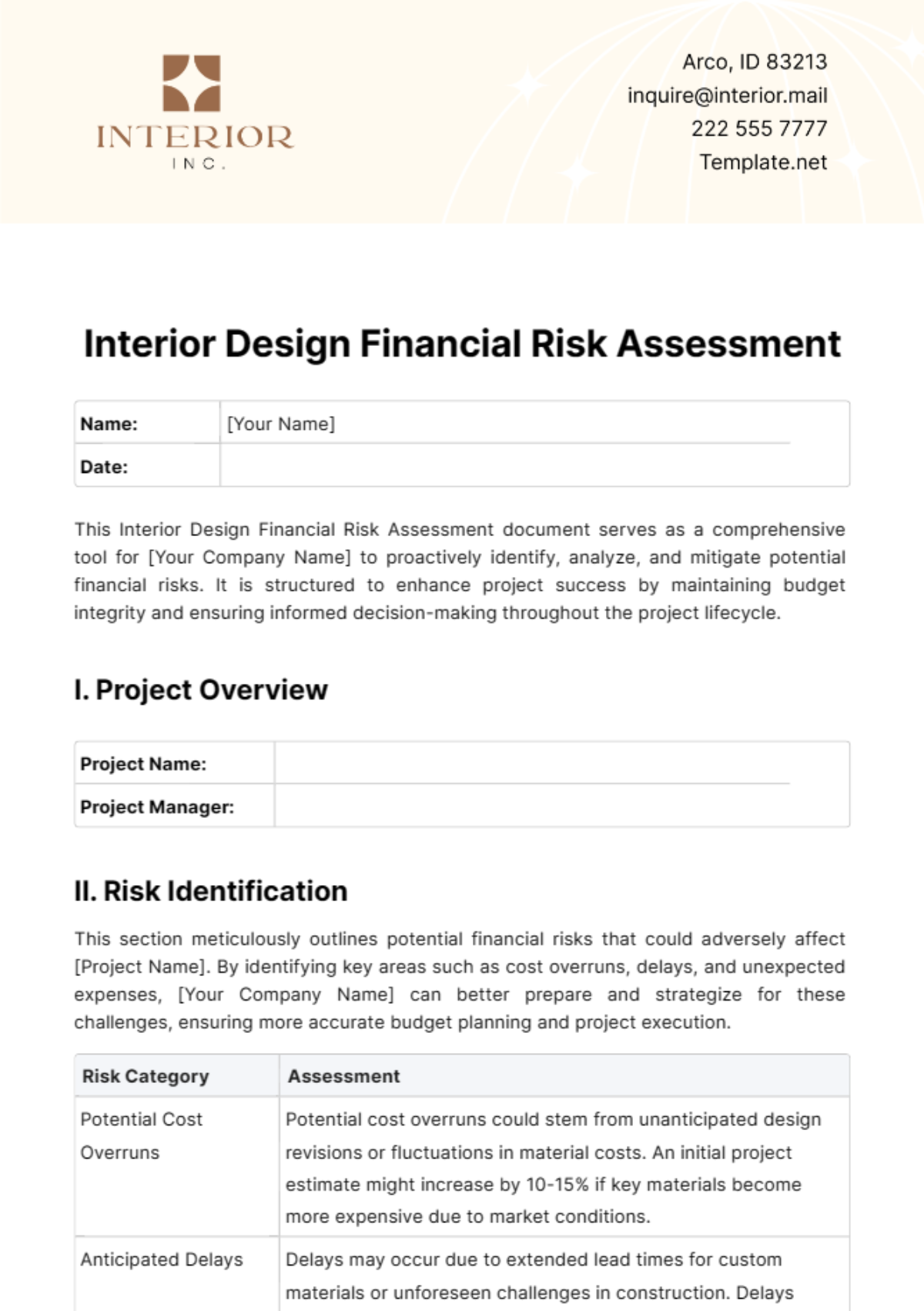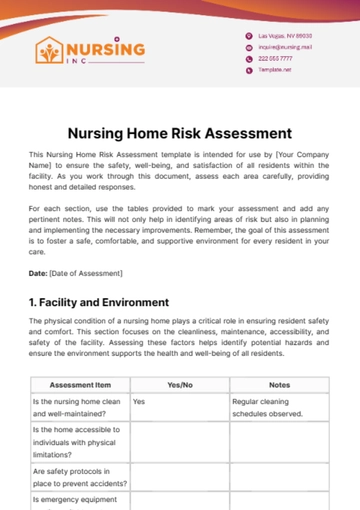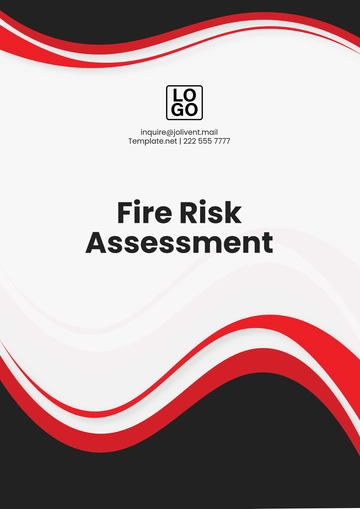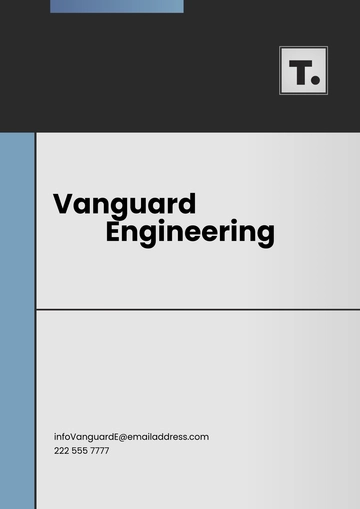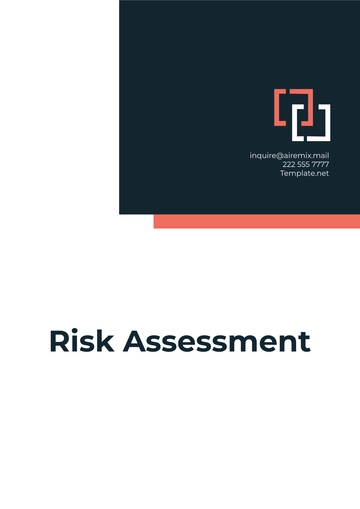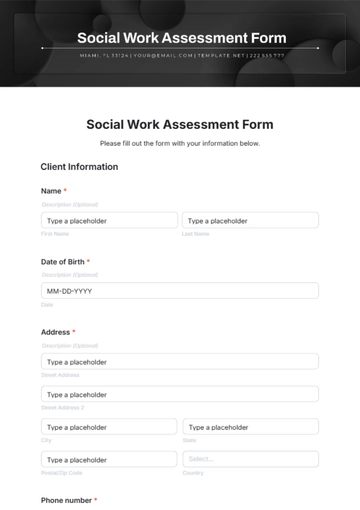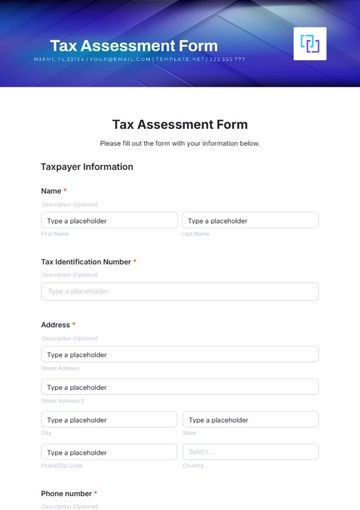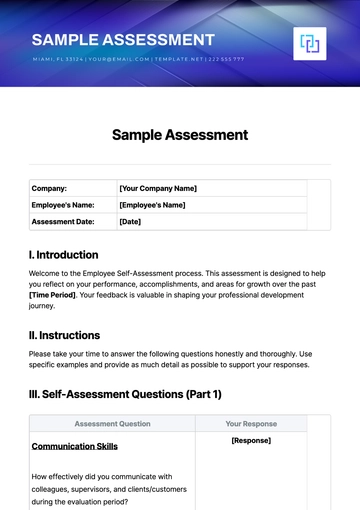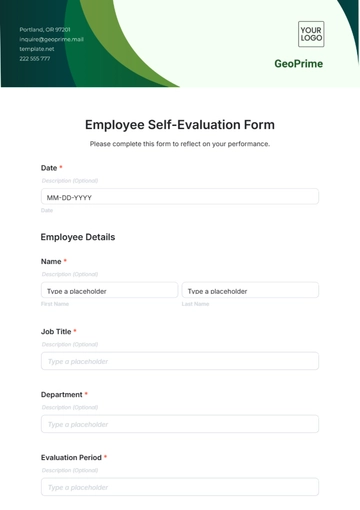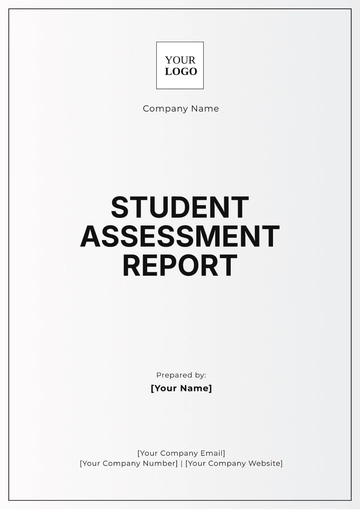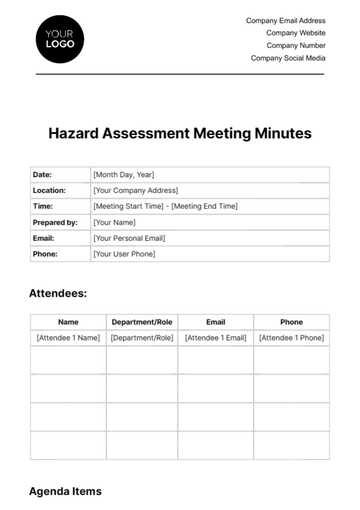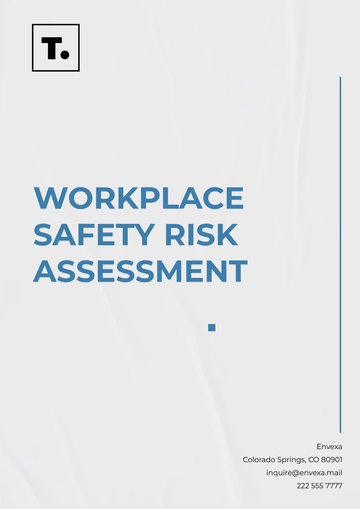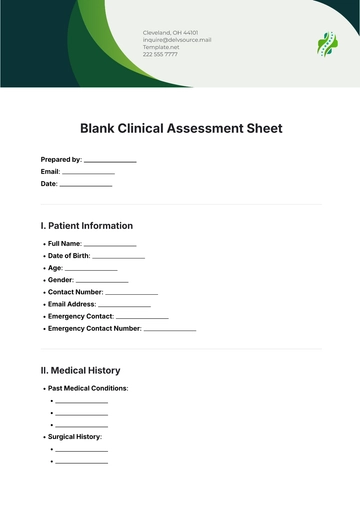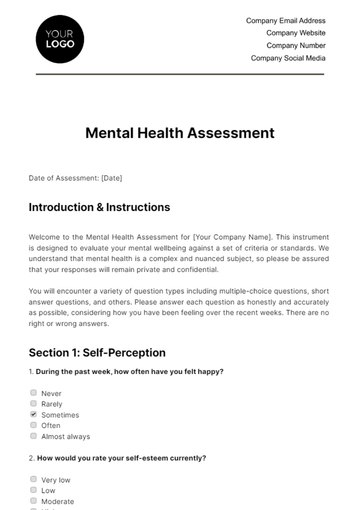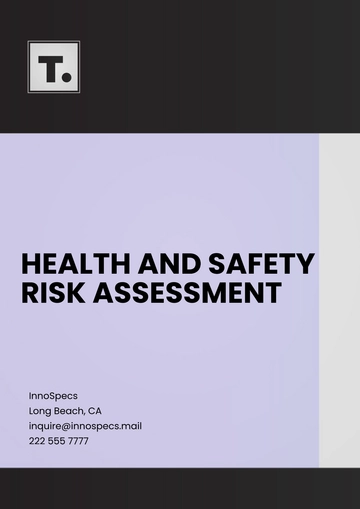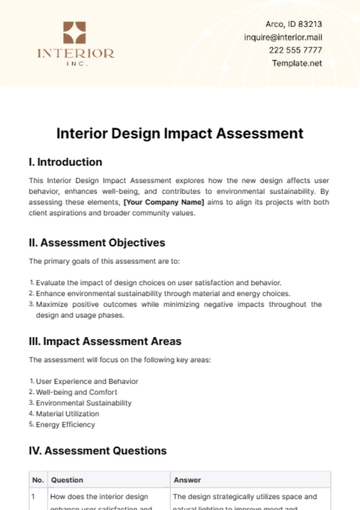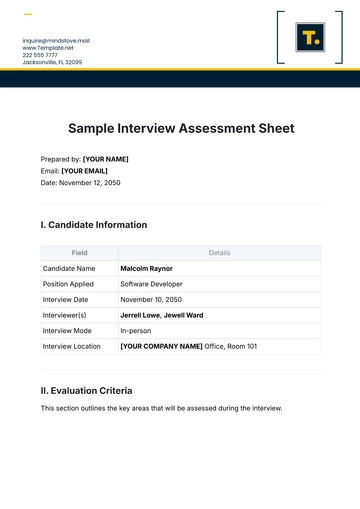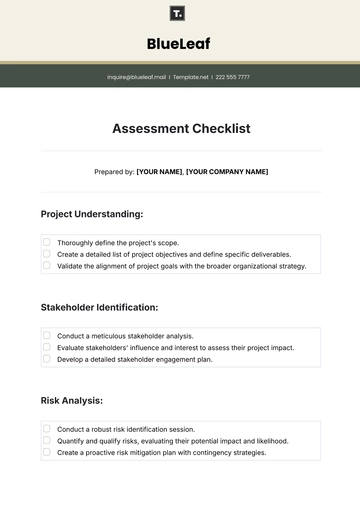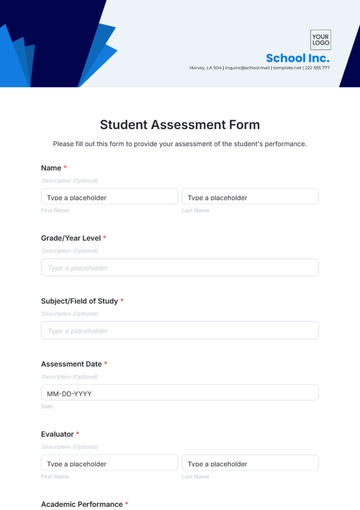Interior Design Financial Risk Assessment
This Interior Design Financial Risk Assessment document serves as a comprehensive tool for [Your Company Name] to proactively identify, analyze, and mitigate potential financial risks. It is structured to enhance project success by maintaining budget integrity and ensuring informed decision-making throughout the project lifecycle.
I. Project Overview
Project Name: | |
Project Manager: | |
II. Risk Identification
This section meticulously outlines potential financial risks that could adversely affect [Project Name]. By identifying key areas such as cost overruns, delays, and unexpected expenses, [Your Company Name] can better prepare and strategize for these challenges, ensuring more accurate budget planning and project execution.
Risk Category | Assessment |
|---|
Potential Cost Overruns | Potential cost overruns could stem from unanticipated design revisions or fluctuations in material costs. An initial project estimate might increase by 10-15% if key materials become more expensive due to market conditions. |
Anticipated Delays | Delays may occur due to extended lead times for custom materials or unforeseen challenges in construction. Delays could extend the project timeline by up to 20%, affecting overall budget allocations. |
Unexpected Expenses | Possible unexpected expenses might include emergency repairs on unexpected structural issues or additional costs incurred from compliance with new regulations that were not accounted for in the initial planning. |
Underestimation of Resources | There is a risk of underestimating the quantity of materials or the man-hours required, which could result in a last-minute scramble to secure additional resources, potentially at a higher cost. |
Financial Obligations to Subcontractors and Suppliers | [Your Company Name] is contractually obligated to pay subcontractors and suppliers as per the terms agreed upon. Failure to meet these obligations on time can result in penalties or strained relationships affecting future projects. |
III. Risk Analysis
Following risk identification, this section evaluates the likelihood and potential financial impact of each risk on [Project Name]. This critical analysis helps prioritize risks based on their potential severity, guiding resource allocation and strategic planning effectively.
Risk Factor | Likelihood (Low, Medium, High) | Potential Financial Impact |
|---|
Cost Overruns | Medium | Could increase project costs by up to 15%, impacting profitability. |
Project Delays | High | May extend the project timeline, increasing labor and overhead costs by up to 20%. |
Unexpected Expenses | Medium | Could result in an additional 5-10% of the project budget. |
Resource Underestimation | Low | Might require an additional 10-15% in budget to cover unexpected resource needs. |
Financial Obligations | High | Non-compliance with payment terms could incur penalties or legal costs, impacting cash flow. |
IV. Risk Management Strategies
This section proposes strategic measures to address identified risks. It details contingency plans and preventive actions that [Your Company Name] can implement to mitigate adverse effects on the project's financial health and timeline, thereby safeguarding both client satisfaction and project profitability.
Risk Category | Management Strategy |
|---|
Cost Overruns | Establish a contingency fund of at least 20% of the project budget to manage overruns. |
Project Delays | Implement robust project management practices, including frequent progress reviews and maintaining a flexible scheduling buffer. |
Unexpected Expenses | Regularly update risk assessments to include potential regulatory changes and allocate funds accordingly. |
Resource Underestimation | Conduct detailed resource audits at each major project milestone to adjust plans and budgets proactively. |
Financial Obligations | Maintain transparent and timely communication with all subcontractors and suppliers to negotiate favorable terms and avoid conflicts. |
V. Review and Monitoring
Effective risk management is an ongoing process. This section outlines the procedures for continuous monitoring and reviewing of the financial risks associated with [Project Name]. Regular updates and stakeholder engagement are crucial for adapting strategies to emerging risks and ensuring project objectives are met within budget.
Monitoring Activities | Description |
|---|
Periodic Financial Reviews | Conduct monthly financial reviews to assess budget adherence and identify deviations early. |
Risk Assessment Updates | Update risk assessments quarterly or in response to significant project milestones or external changes impacting the project. |
Stakeholder Meetings | Hold regular meetings with all project stakeholders to communicate status, risks, and adjustments. |
Progress Tracking against Milestones | Use project management tools to track progress in real time and compare against planned milestones and budget forecasts. |
VI. Signature
By signing below, you acknowledge that you understand the financial risks and are committed to following the outlined risk management strategies.

[Your Name]
[Your Position]
[Your Company Name]
[Date]
Interior Design Templates @ Template.net
